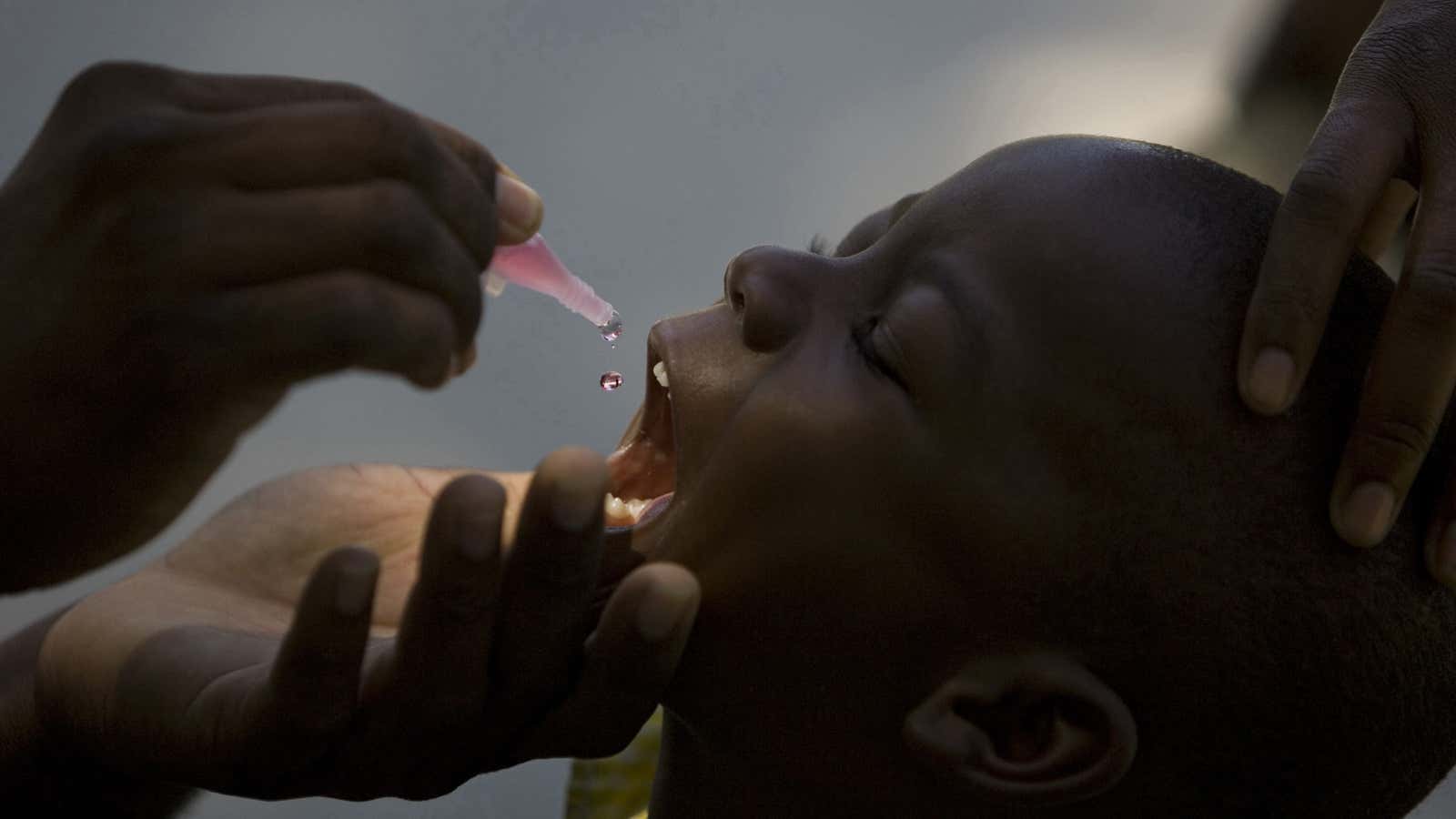A comprehensive new study aims to make the case for childhood vaccinations by studying their return on investment, around the world.
This month in Health Affairs, a team of US public health and data specialists calculated the costs and economic benefits associated with distributing childhood vaccines for diseases in 94 low- and middle-income countries. The study, supported by the Bill and Melinda Gates Foundation and advocacy group Gavi, the Vaccine Alliance, considered ten different antigens, including measles, rubella, human papillomavirus, and rotavirus.
Investing in national immunization programs agains those ten diseases resulted in a return that was an average 16 times greater, they found. In other words, one dollar toward vaccinations saved $16 in medical costs and productivity losses in the countries studied, down the road.
To capture the economic benefits of vaccinations, researchers calculated the savings that vaccination provided in terms of avoiding treatment and transportation costs, lost productivity due to disability or death, and loss of productivity in caretakers. They calculated those benefits for each country from 2011 through 2020, and compared the return on investment (the benefits minus the costs of providing vaccinations, divided by costs) with the costs of providing no vaccinations.
The returns were even greater when they took into account the value of healthy individuals’ contributions to the local economy. When they estimated the value of an individual’s economic contribution per year, and applied that to the number of lifetime years that a young child gains because of immunizations, they found that every dollar toward childhood vaccinations resulted in a $44 return within the decade.
The regions that would see the greatest return on childhood vaccinations, according to the study, were south and southeast Asia and sub-Saharan Africa. The Middle East would see “moderately lower but strong” returns. And of all the antigens, vaccinating for measles had the highest return on investment—likely because of the vaccine’s low cost and high efficacy.
The authors note that doesn’t mean one part of the world should get priority over another, or that one type of vaccine is more urgently needed than any other. Rather, their analysis shows that immunizing kids has real economic benefits; hopefully, that data can be used to guide public health policy decisions in the areas that need it most.
